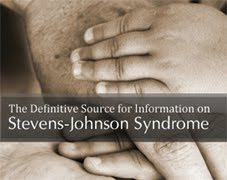 According to a University of South Carolina study in the Journal of Consumer Research, marketers have an easier time misleading dieters with product names. Dieters, the study concludes, rate food items with healthy names such as "salad" as being healthier than those with less healthy names such as "pasta" even when the foods are identical.
According to a University of South Carolina study in the Journal of Consumer Research, marketers have an easier time misleading dieters with product names. Dieters, the study concludes, rate food items with healthy names such as "salad" as being healthier than those with less healthy names such as "pasta" even when the foods are identical. "The fact that people's perceptions of healthfulness vary with the name of the food item isn't surprising," Dr. Caglar Irmak, an assistant professor of marketing at the Darla Moore School of Business, said. "What is interesting is that dieters, who try to eat healthy and care about what they eat, fell into these 'naming traps' more than non-dieters who really don't care about healthy eating."
For example, when study participants were given a choice between the same candy labeled "fruit chew" and "candy chew," dieters perceived the candy named fruit chew as more healthful than the one named candy chew. They also ate more candies when the items were called fruit chews (versus candy chews).
Dieters avoid forbidden foods based on product names.
Where marketers take advantage of dieters is in the naming of foods. Specifically, researchers said a salad may include items that dieters typically would avoid (meat, cheese, bread or pasta); milkshakes listed as "smoothies;" potato chips called "veggie chips;" and sugary drinks labeled "flavored water."
"These results should give dieters pause. The study shows that dieters base their food decisions on the name of the food item instead of the ingredients of the item," Irmak said. "As a result, they may eat more than what their dieting goals prescribe."
He said non-dieters are equally prone to make bad choices. They tend to miss cues that imply healthfulness, including names, because of their lack of focus on healthy eating.
Heightened awareness opens the doors for double-sided branding.
While not included in the study, the article that will be published in the August issue of the Journal of Consumer Research hits a home run in better understanding the nature of branding and why consumers are sometimes duped into choosing the exact opposite of what they are seeking.
For example, prior to the Gulf Coast oil spill, consumers considered BP one of the top energy providers in renewable energy. Johnson & Johnson secured a position as placing medical safety first until recent actions eroded the brand. Susan G. Komen for the Cure was a frontrunner in reputation until bad decisions undermined its credibility.
 However, prior to brand erosion, the brands benefited from word associations whether or not they were delivering on the brand promise. Consumers with a heightened sense of need (clean energy, safe medicine, breast cancer) seldom vet their purchasing decisions, referrals, or recommendations. Instead, they rely on prevailing word associations — much like dieters assume salads are healthy — in order to make purchasing decisions.
However, prior to brand erosion, the brands benefited from word associations whether or not they were delivering on the brand promise. Consumers with a heightened sense of need (clean energy, safe medicine, breast cancer) seldom vet their purchasing decisions, referrals, or recommendations. Instead, they rely on prevailing word associations — much like dieters assume salads are healthy — in order to make purchasing decisions. Conversely, consumers without a heightened area of interest are less likely to be swayed by such word associations attached to brands and brand names. In fact, it's very likely the increased information overload could be forcing people to rely less on evidence and more on simple and sometimes erroneous word associations that are conditioned by friends and self-selected information streams. Ant that is some real food for thought.


























